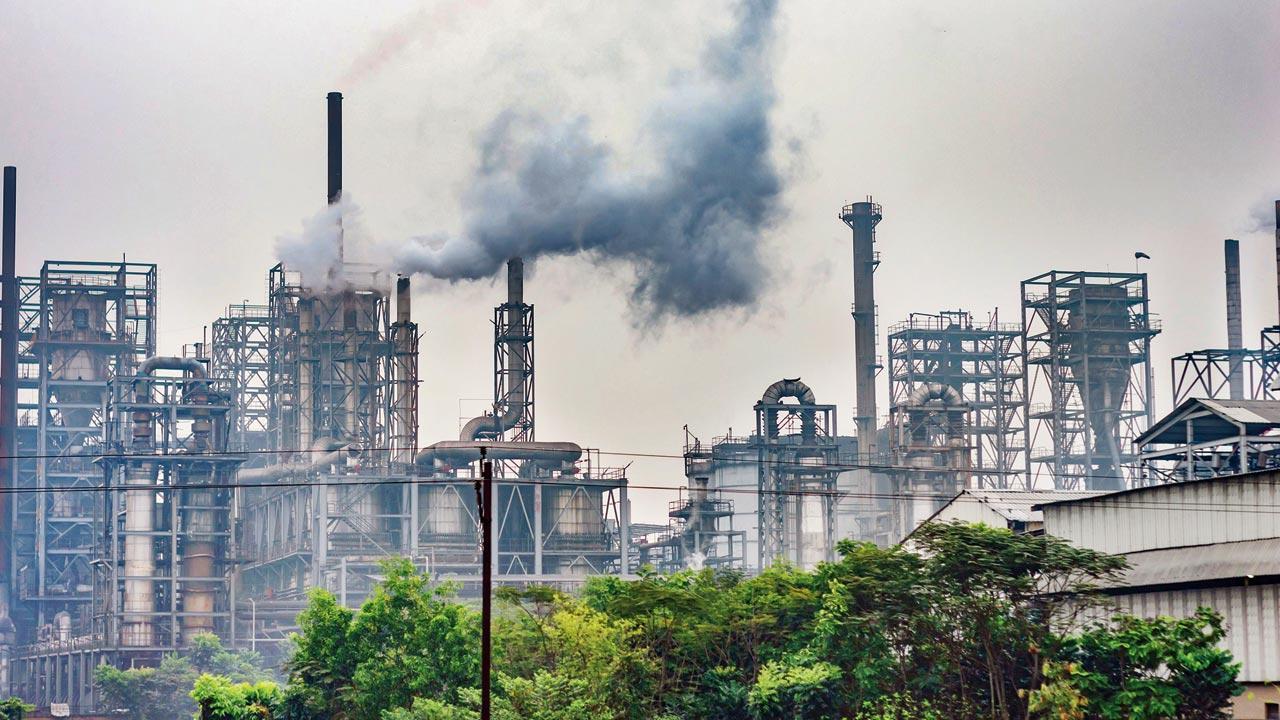Thane could cut GHG emissions by 22 per cent

Thane city can ensure a 22 per cent reduction in its annual greenhouse gas (GHG) emissions by 2025-26, according to a recent climate assessment report. A report—‘State of Cities: Towards Low Carbon and Resilient Pathways’—published by the National Institute of Urban Affairs (NIUA) under the Ministry of Housing and Urban Affairs, has identified action points to curb emissions from the city’s transport, residential and public buildings.
Thane city—a key pillar in the state’s developmental master plan—has been staring at a mix of climate issues and increasing greenhouse emissions, thanks to its established status as an IT hub. However, the report has identified how the city can reduce its annual emissions by 22 per cent by 2025-26, through effective action points that can be implemented at a city and state level.
The report gives an insight into 15 of India’s smart cities, their future challenges and pathways in terms of climate resilience, which includes mitigation of greenhouse gases (GHG). GHG, around Earth and its atmosphere, traps heat and contributes to the greenhouse effect, which in turn leads to global warming.
Explaining the recommendations put forth by the report Hitesh Vaidya, director of NIUA, said, “This is a first-of-its-kind report which not only underscores the urgent need for resilient climate action but also highlights the crucial role it plays in attracting investments for low carbon transitions. It serves as a guidebook for Indian cities, enabling them to navigate the complexities of sustainable urban development and make informed decisions that will shape a greener, more resilient future.”
According to Vaidya, by harnessing the potential of the report, the aim is to create a harmonious balance between economic progress, environmental stewardship and social inclusivity, ultimately shaping a sustainable and prosperous future for all. “NIUA’s role as the U20 secretariat is to help cities understand their commitments and develop sustainable solutions to achieve inclusive prosperity,” he added.
As per the report, Thane has GHG emissions of 2.29 MTCO2e (metric tonnes of carbon dioxide equivalent), uses 13.06 million GigaJoule (GJ) energy and consumes 1,677 million kW of electricity annually.
When it comes to consumption in Thane city, residential buildings account for the highest energy consumption (47 per cent) and are also the highest in terms of GHG contributors (43 per cent). In terms of the energy used by the local government, its GHG emissions profile shows that transport is the biggest energy consumer (36.9 per cent), but public sector buildings are the biggest emitter (47.8 per cent).
Past green endeavours
Thane has long strived to achieve sustainable practices and a reduction in energy consumption as well as GHG emissions. In 2015, an 11-member international jury declared Thane as the National Earth Hour Capital. Notable actions by the Thane city administration include the mandatory use of solar water-heating systems for municipal buildings and energy solutions such as solar and wind-solar hybrid systems for lighting and air-conditioning. The city’s plan for solar rooftop metering-based power generation and regular energy audits in 2015 pushed the city to emerge as the winner in the year-long national competition.
Recommendations of report
The report has listed action points to ensure that Thane city—a commercial hub with its economy based mainly on consumer-related services including hospitality and the IT industry—reduces its emissions by 22 per cent by 2025-26.
To get there, all buildings (residential, commercial, industrial) must use rooftop solar panels and solar water heaters, evaluate the integration of district cooling systems and conduct energy audits for retrofits. There must be green building designs for high-rises, along with the deployment of photovoltaic (PV) cells and solar water heating systems at hotels and hospitals.
The transport sector could look at developing an electric mobility framework, introducing electric buses with solar PV charging facilities at depots and replacing the existing diesel bus fleet with CNG buses. There must also be a speedy implementation of EVs for intermediate modes of public transport. Additionally, there should be a city-wide scale-up of energy efficient street-lighting.
In the area of waste management, the administration can look at 600 tonnes per day (TPD) waste to energy and 2 TPD plastic waste to fuel plants, the scientific closure of landfills and the development of a solar farm. There will also be a need for decentralised bio-methanation and composting plants for organic waste processing. Water and wastewater departments can adopt renewable energy systems at water supply and sewage treatment facilities. The report demarcated wastewater treatment, stormwater management, and solid waste management to be at high risk in its assessment.
“While the assessment talks about risks, there are ways to mitigate them, Thane can look at an integrated urban water management and catchment management plan. Additionally, there can be integrated groundwater management through increased recharge efficiency. For wastewater treatment, we need to look at a faecal sludge management policy with reuse methods and dual plumbing. with regard to stormwater management, the administration can install an IoT-based stormwater grid, harvest rainwater with regular monitoring and incentives, and look at an early warning system and flood lines for hazard alerts,” said Emani Kumar, executive director, ICLEI South Asia.
15
No. of Indian smart cities report covers

Atul Tiwari is a seasoned journalist at Mumbai Times, specializing in city news, culture, and human-interest stories. With a knack for uncovering compelling narratives, Atul brings Mumbai’s vibrant spirit to life through his writing.





